|
As long as we’ve had houses and other structures, we’ve had people who specialized in building them. Until the last 100 years or so, though, the idea of safety in the construction industry just didn’t exist. How has construction industry safety improved over the years, and what advances are we still making to ensure workers are safe on the job? A Brief History of Construction SafetyOne hundred years ago, construction safety looked a lot different than it does today. In the late 1800s and early 1900s, there were no safety measures to prevent people from getting injured or even killed on the job. While employees had the option to sue their employer for damages, their chances of winning were slim to none because employers weren’t liable for these incidents. The U.S. government didn’t establish the National Safety Council until 1913, and it wasn’t until 1921 that a majority of the states had some sort of Workers’ Compensation laws on the books. OSHA, the Occupational Safety and Health Administration that we so often cite as the construction safety “bible,” didn’t make its appearance until 1971. Even with all the advances made over the past century, there were still 3.5 fatalities for every 100,000 workers in the sector in 2019. Safety on the Modern Construction SiteConstruction site safety is something the industry is constantly trying to improve, with varying levels of success. Despite this, one out of every five workplace fatalities happens in the construction industry, the highest across every sector. What can companies do to improve safety on their work sites? A safe work site starts with comprehensive and continual safety training. Everyone should receive the same training, and that shouldn’t stop once a new hire has completed their onboarding. Visitors and anyone who doesn’t work for your company should either be barred from entering the job site, or should be accompanied by a trained employee at all times to prevent incidents. In addition to training, employees also need the tools and equipment to do their job safely. This should include, but not be limited to, personal protective equipment (PPE) like hard hats, safety goggles, ear protection, and gloves. All equipment and PPE needs to be maintained so it’s in good working order, and repaired or replaced as needed. Read 5 traits of the safest contractors. Keep in mind that you will need different sizes of PPE for your various crew members. This is one part of life where one-size-fits-all just won’t cut it. Looking ForwardConstruction safety has come a long way in the last 100 years, from a time when we had no safety rules whatsoever, to now, when we’ve got plenty of rules to keep us safe. It’s not a perfect system, but it’s been a series of strong steps in the right direction. Author Bio: Rose Morrison is a freelance writer who covers construction and building design topics. She is also the managing editor for Renovated. Other Useful Articles How poor safety costs your construction company money Who is responsible for safety on your construction project? Construction projects and high temperatures - do you know the risks? Do you want to learn how to manage construction projects successfullyPaul Netscher has written several easy to read books for owners, contractors, construction managers, construction supervisors and foremen. They cover all aspects of construction management and are filled with tips and insights.
Visit to read more. The books are available in paper and ebook from most online stores including Amazon.
6 Comments
Frequently construction projects end over budget, are finished late, are of poor quality, cause injury or death to workers and even to those using the project after it's complete, contractors loose money on the project, or the project ends in protracted and expensive legal battles. How can we improve construction project outcomes for all parties - client or owner, contractor, subcontractors, and suppliers? Is it possible to have a project win-win for all parties? How can we improve the success of our construction projects? It is possible to improve the success of construction projects with better collaboration. How to improve collaboration on construction projectsSome say that collaboration can be improved by using technology. How will this happen? Can new forms of contract improve collaboration? Who is responsible for improving collaboration on construction projects? Join me with this presentation I gave as a CPD webinar as I share my thoughts and experience on how we can improve collaboration in the construction industry.
Other useful articles: Why construction projects go wrong before they even start – what should owners do? Why owners sometimes employ the wrong contractor Do You Have Good Communication On Your Construction Project? Do you want to learn how to manage construction projects successfullyPaul Netscher has written several easy to read books for owners, contractors, construction managers, construction supervisors and foremen. They cover all aspects of construction management and are filled with tips and insights.
Visit to read more. The books are available in paper and ebook from most online stores including Amazon. Frequently construction projects end in long and acrimonious disputes which can be costly, consume large amounts of time and energy, and which sometimes drag on long after the project construction work is complete. These disputes may end inconclusively with no winners - except perhaps the lawyers. These disputes occur between clients/owners and contractors, between contractors and their subcontractors and suppliers. In my last article Avoiding Construction Disputes I mentioned that I had resolved hundreds, probably more than a thousand, variation claims (change orders) with my clients amicably and without declaring a dispute. Some recent examples of disputes https://www.santafenewmexican.com/news/local_news/eldorado-hotel-sues-designers-builders-of-rooftop-swimming-pool/article_fe18b412-90b8-11eb-aafb-33f9dd971cfc.html https://www.cincinnati.com/story/news/2020/09/02/forest-hills-says-subcontractor-has-grossly-exaggerated-money-due/5684289002/ https://therealdeal.com/miami/2020/09/09/miami-river-condo-association-alleges-10m-in-defects-lawsuit/ So how can we prevent disputes on our construction projects? How contractors can avoid construction disputesContractors can avoid disputes if:
How clients and owners can avoid construction disputesEmployers can avoid disputes by:
ConclusionCollaboration between contractors and the client or owner, collaboration between contractors and their subcontractors, a team effort can lead to a successful construction project for all. Good communication is essential to successful projects. Aiming for a project that is a win for everyone, rather than a winner take all approach. It is possible to avoid construction disputes. Other useful articles: Why owners sometimes employ the wrong contractor Are your subcontractors profitable? Should you care? what makes a good client? 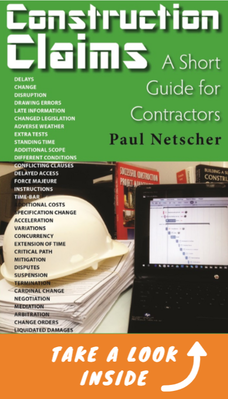 This article is from the webinar Avoiding Construction Disputes by the author and information included in author's book Construction Claims: A Short Guide for Contractors. This easy to read book demystifies the claims (change order) processes ensuring entitlements are claimed. Learn when you can claim, how to make claims compelling, and the supporting documentation required to win. Your eyes will be opened to numerous events, costs and impacts. Knowing some of these tips could dramatically improve profits and avoid time consuming acrimonious disputes. Also included is advice for contractors to avoid and defend claims from employers and subcontractors. © 2021 This article is not to be reproduced for commercial purposes without written permission from the author. Do you want to learn how to manage construction projects successfullyPaul Netscher has written several easy to read books for owners, contractors, construction managers, construction supervisors and foremen. They cover all aspects of construction management and are filled with tips and insights.
Visit to read more. The books are available in paper and ebook from most online stores including Amazon. |
Archives
June 2024
Note: We welcome genuine comments, especially comments that add additional information to the subject matter in the article. We however reserve the right to remove inappropriate comments, which includes comments that have nothing to do with the subject, comments that include inappropriate language, and comments that are an advertisement for a product or company, or which include an advertising link. Comments must be in English. We will not enter into discussion on why a particular comment was removed.
CategoriesCopyright 2016 - The attached articles cannot be reproduced for commercial purposes without the consent of the author.
The opinions expressed in the attached articles are those of the writer. It should be noted that projects are varied and different laws and restrictions apply which depend on the location of the contractor and the project. It's important that the reader uses the supplied information taking cognisance of their particular circumstances. The writer assumes no responsibility or liability for any loss of any kind arising from the reader using the information or advice contained herein. "I have what I consider some of the best books on construction management."
Books are available from: Amazon.com Amazon.co.uk takealot.com kalahari.com Amazon.in Amazon.de Amazon.fr Amazon.it Amazon.com.au Powell's Fishpond uread bokus Amazon.ca Amazon.es Other retail stores Available in paperback or on Kindle "28 YEARS OF CONSTRUCTION PROJECT MANAGEMENT EXPERIENCE, DEVELOPING SUCCESSFUL CONSTRUCTION PROJECT MANAGERS AND BUILDING SUCCESSFUL CONSTRUCTION COMPANIES"
|
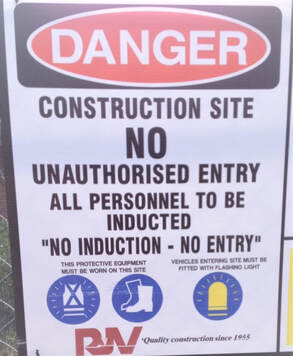
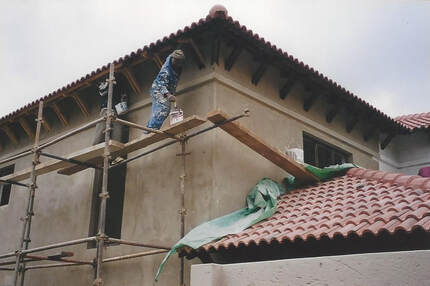
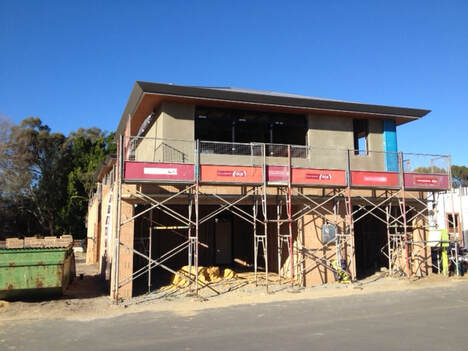
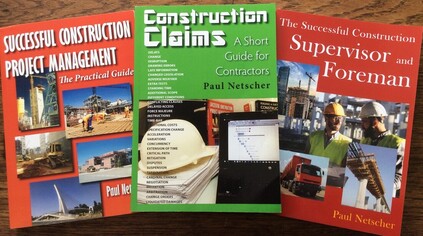
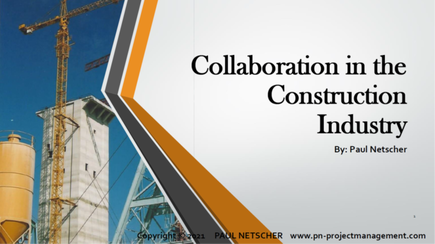
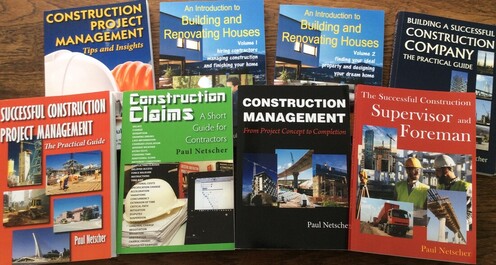
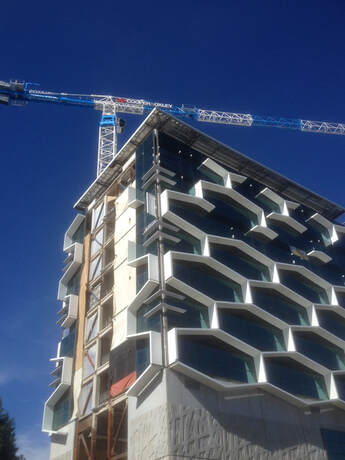
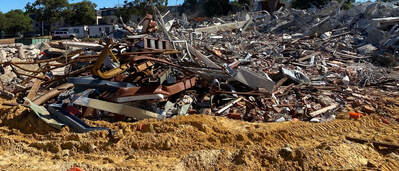
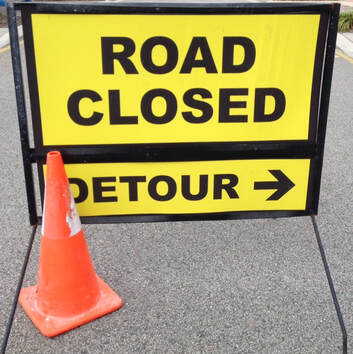

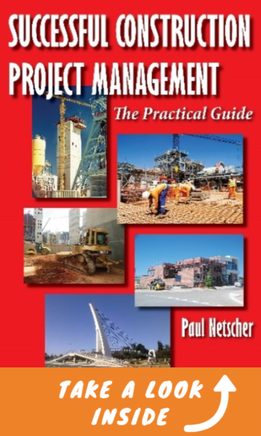


 RSS Feed
RSS Feed




